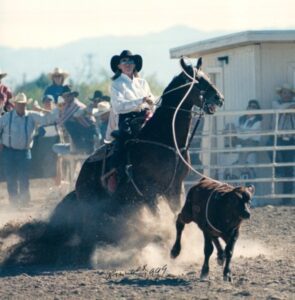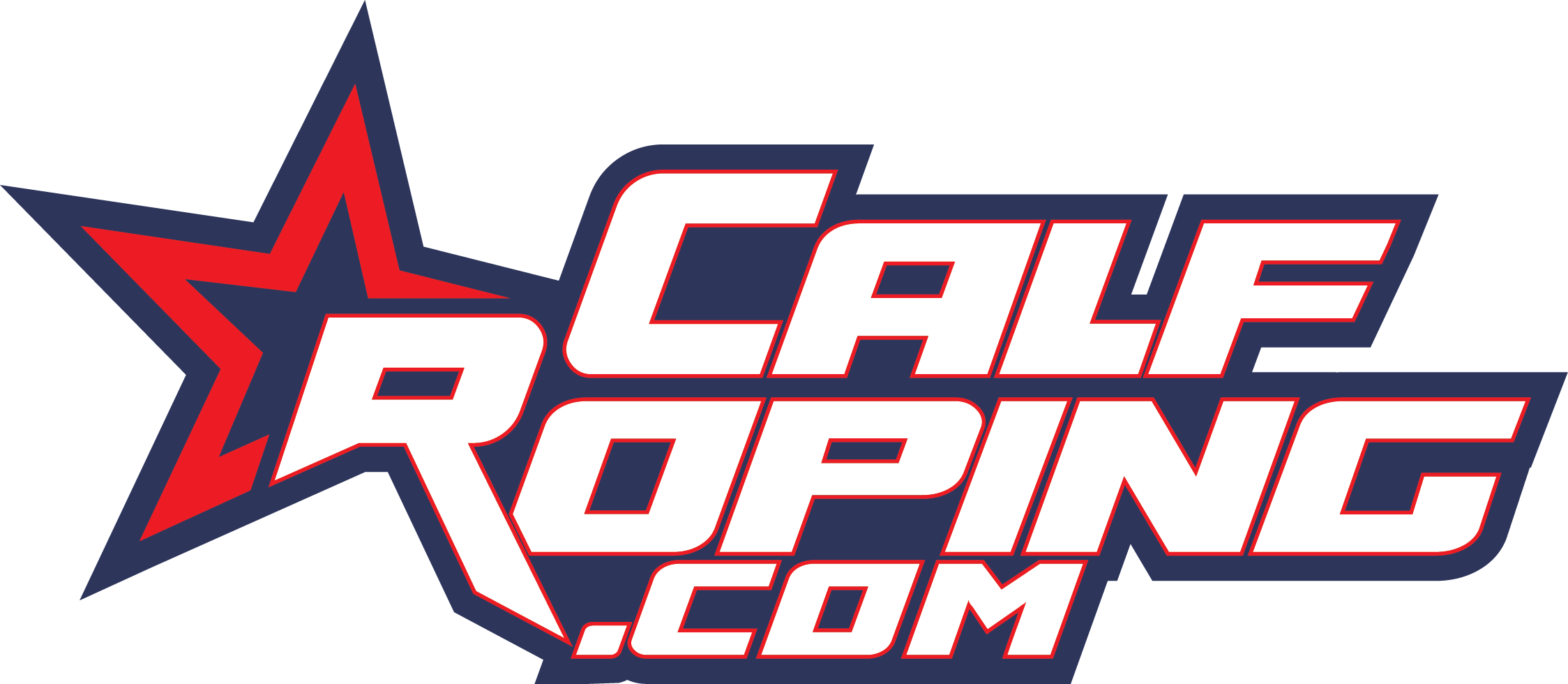Perhaps the most complicated of all rodeo’s timed events, calf roping requires a specific set of tools in order for the roper to accomplish his goal of roping and tying the calf as quickly as possible.
#1: The Horse
Obviously, the equine partner is critical to all “time-ys” and the calf, or tie down, roping is no different from its counterparts in team roping, steer wrestling, barrel racing, steer roping or breakaway roping.
The tie down roping horse must have quick speed, patience and a willingness to work. He must wait in the corner, allowing the roper to see the required start without breaking the barrier, then burst from the box at full speed and lock onto the calf, tracking him no matter which direction he goes.
Once he’s given his rider a chance to rope the calf, the horse must be ready to put on the brakes as the roper pulls his slack, not only bringing himself to a complete stop but also stopping the calf and turning him back 180 degrees.
As the roper dismounts, the horse must keep the rope tight and continue to work backwards to keep tension in the rope until the roper has flanked the calf. He must then stand quietly, maintaining the tension in the rope until the calf is tied.
Throughout the whole run, which may be fast or not, the horse is working mostly on his own accountability and must not be distracted by outside forces. A top level calf horse takes years of training and seasoning to reach that proficiency, which is why good, solid horses are so expensive to purchase.
#2: The Rope
The calf roper must have a rope to catch the calf before any of the tying part of the run is possible. The rope length varies by personal preference but 25 feet is common. Ropes can be made of several materials either alone or in combination with others and may include poly-grass, poly ropes (made of polyester or polypropylene) and syngrass with different numbers of strands twisted together and with or without a solid core. Ropes also comes in different diameters so ropers choose the combination of attributes that best suits their skill level and desired feel.
#3: The Tack
Naturally, the rider will require a good saddle with a well-made tree as the calf’s weight will hit the end of the rope which is tied to the saddle horn. In addition, the roper will need a bridle that suits his hands and the horse’s mouth, a tie down and spurs (almost always) and protective leg boots or wraps to ensure no injuries occur to the horse during the run.
#4: The Horn Knot
A horn knot ties the rope off solidly to the saddle horn. Most often made of intricately braided nylon, it slides onto the rope, which is pressed into a loop or figure eight that will wrap around the horn. Then the slack is pulled out until the horn knot cinches down tightly.
#5: The Neck Rope
One of the key pieces of safety equipment during the run is the neck rope. Many associations, including the Professional Rodeo Cowboys Association (PRCA), require the use of a neck rope.
The neck rope is a shorter piece of rope which is secured loosely around the horse’s neck. The roper will run his rope from the horn knot at the saddle horn, through the neck rope and generally through a loop of nylon tied to the bridle or tie down of the horse known as the keeper, and back to the roper’s hands.
The neck rope ensures that the horse continues to face the calf after the roper has dismounted.
#6: The Jerk Line
Many ropers employ the use of a jerk line as an aide to cuing the horse once they have dismounted. The jerk line is a length of rope which is attached to the horse’s bridle then run through a pulley usually tied to the pommel or swells of the saddle. From the pulley, the remainder of the jerk line is tucked into the roper’s belt in loops.
Once he dismounts, the loops pull from the belt one by one as the roper makes his way to the calf, providing pulls to the bridle to remind the horse to continue to step back, keeping the needed tension on the rope to help the calf roper complete the flank and tie.
#7: The Piggin String
The piggin string is the smaller, shorter rope used to secure the calf’s legs during the tie. Piggin strings are usually about 6.5 feet long and made of nylon fibers.
Most frequently, the roper will place the loop of the piggin string in his mouth to begin the run with the remainder of the string tucked into his belt. Once he’s flanked the calf, he will place the loop of the piggin string around the front leg of the calf, gather the two back legs, and pull the rest of the string from his belt as he wraps the three legs and completes the tie with a hooey or half-hitch. Less common is when a roper tucks the whole string into his belt rather than placing the loop in his mouth, such that once he’s flanked the calf, he’ll pull the string from his belt to begin the tie.
#8: The Rope Can
The rope can is a functional tool not just for storing and transporting ropes but also for helping them keep their shape and protecting them from the elements.
#9: Accessories
Other tools almost always found in the roper’s can are a pocketknife, used to cut ropes or strings in case a horse steps over the rope or other problems occur in the run, and baby powder, used to eliminate moisture and humidity in the rope or piggin string and keep both moving smoothly and quickly.
Most ropers also have equipment used for training and practice such as roping dummies or calf heads which can be stuck into the end of a bale of hay, and tying dummies too. There are also sleds for the dummies to be pulled to practice on the horse. Special breakaway hondos for the ropes may also be used if the roper does not want to dismount and tie the calf in a practice session.

Jolee Jordan
Jolee Jordan served as the Women’s Professional Rodeo Association Roping Director for over 25 years. Jordan is an NFR qualifier in the barrel racing and was the first female team roper to qualify for the PRCA’s Turquoise Circuit Finals. Jordan has been a long-time contributor to The Team Roping Journal Magazine and brings her unique perspective to CalfRoping.com.




